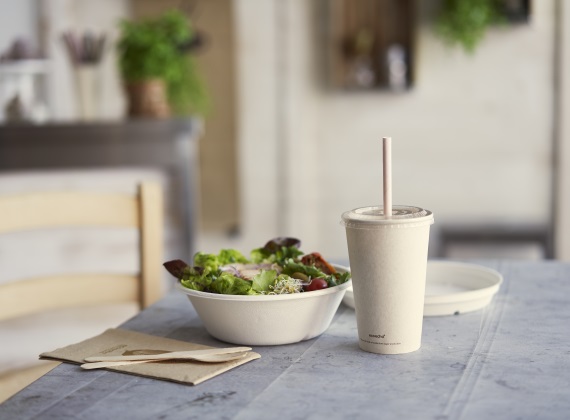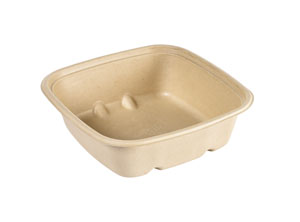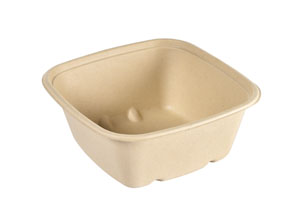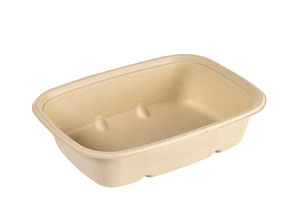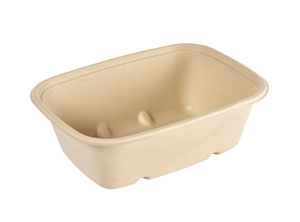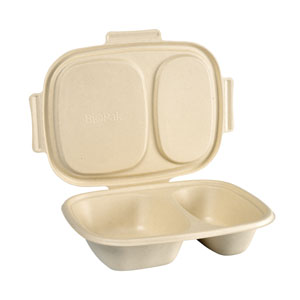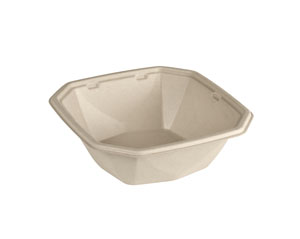What is bagasse?
In sugar production, sugar cane or sugar beets are squeezed to obtain the valuable juice of the plants. While the juice is thickened and further processed, the squeezed sugar cane leaves behind fibrous residue: bagasse. In the further course of sugar production, bagasse no longer plays a role, which is why in many cases producers simply burn or otherwise dispose of the supposedly useless byproduct.
However, a number of possibilities for recycling the plant fibers have now emerged.
Bagasse is also anything but worthless for the production of food packaging. Various disposable products can be made from the waste product - and with a smaller carbon footprint than many other resources. After all, the by-product is created entirely without its own cultivation and harvesting cycle. In this respect, bagasse is an upcycled product: an ecological packaging material is created from a raw material that would otherwise often be lost unused.
What is bagasse used for?
The possible uses of bagasse are manifold. For example, the pressed fibers can be used as fertilizer. Under controlled conditions, bagasse can also be used as fuel for heating, although this requires the necessary technology. Similar to the residues of grain, potatoes or corn, sugar cane fibers are also suitable as a base material for bio-ethanol, which serves as fuel for motor vehicles. In addition, bagasse can even be processed into paper.
Bagasse is much more interesting for the catering industry as a bio-based raw material for food packaging. There are several reasons for this: Bagasse is ideal for menu boxes and trays because the material is impermeable to water and does not soften even when the contents are greasy. For heavy-duty use, disposable products made of bagasse can also be coated with a thin layer of bioplastic. This makes soups, sauces and fatty foods easy to transport - without worrying about leaking contents.
Bagasse also lends itself to beverage cups - now a veritable symbol for environmentally harmful disposable products. The German environmental organization Deutsche Umwelthilfe puts the consumption of disposable beverage cups at 320,000 per hour - in Germany alone[1]. Anyone who relies on bagasse here is appealing to guests' desire for sustainability. Well visibly communicated, your food packaging made of bagasse also spreads on social media. This means free social media marketing for you.
[1] Source: German Environmental Aid. Problem Coffee Cup. https://www.duh.de/becherheld-problem/
Where is bagasse produced?
As an unprocessed byproduct, bagasse is produced when sugar cane is squeezed in the course of sugar production. The world's largest sugar cane producing countries are currently Brazil (by a wide margin), followed by India and China. On a smaller scale, bagasse is now even produced in Germany.
To ensure that you receive a truly sustainable material, we recommend that you purchase verified climate-neutral packaging. This includes, for example, bagasse products from BioPak: by co-financing emission reduction projects, we compensate for the pollutant emissions caused by production, transport and disposal.
Compared to plastic, bagasse is definitely a sustainable alternative. This is because plastic production depends to a large extent on crude oil. Its extraction and processing cause enormous pollutant emissions, which is why the EU is increasingly regulating the use of single-use plastic - for example with the EU-wide plastic ban that has been in force since 2021 and will be extended again in 2023.
New plastic is also questionable in terms of the human rights situation in oil-producing countries. That's why environmentally conscious restaurateurs can opt for alternatives such as bagasse or reused rPET instead of plastic. The latter is also made of fossil plastic, but is produced with much less new plastic in the course of recycling. At Duni and BioPak, we also rely on rPET from post-consumer recycling. This involves recycling only plastic that has already been used - without industrial waste from the production of other goods.

